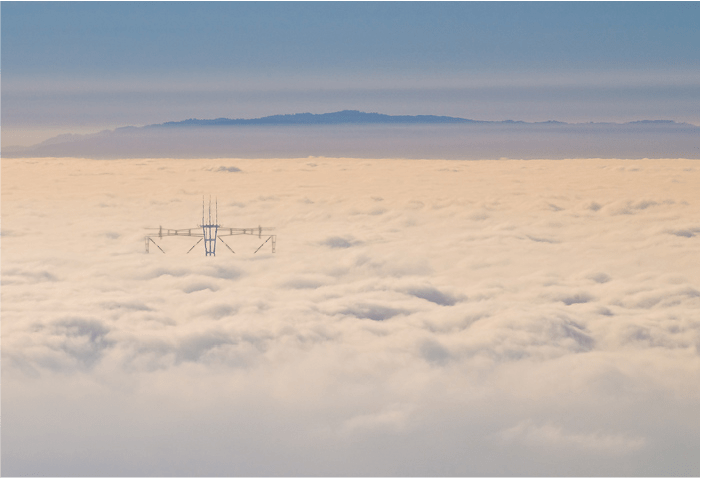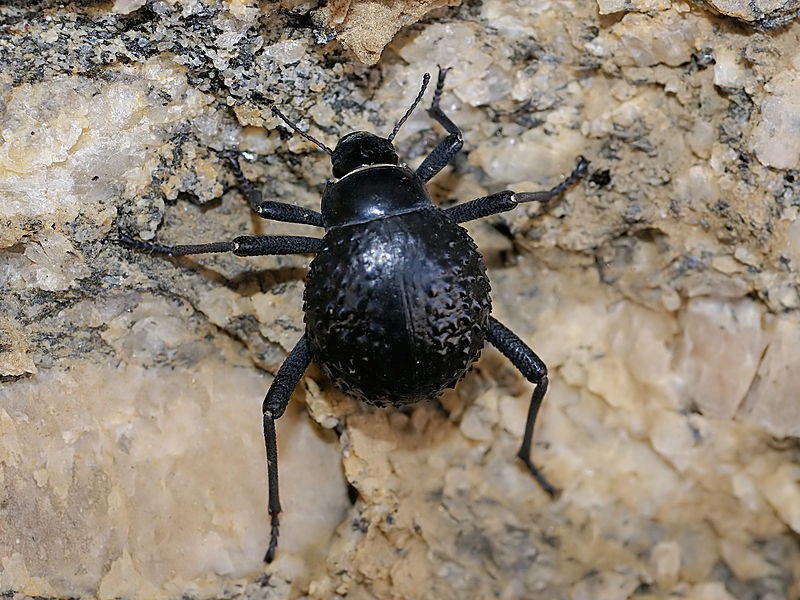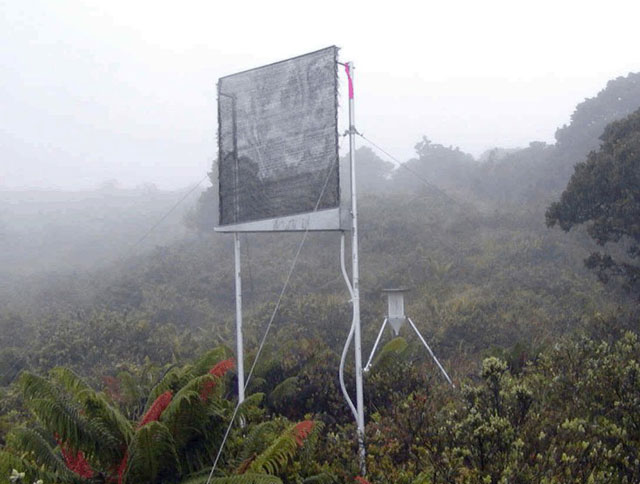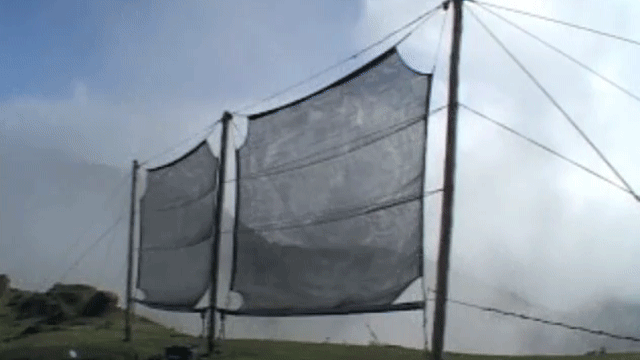California’s running out of water. This year’s record-breaking drought — coming after two already dry years — has the state scrambling for the liquid stuff. Plans to seed clouds for extra snowfall are already in place. But do we really require storm clouds for water? Why not use fog?
San Francisco’s 5.3cm of rain since July is the lowest ever recorded, but the city has no lack of water vapour in the sky. As any tourist trying to take photos of the Golden Gate Bridge can attest, Karl the Fog makes frequent appearances about those parts. And San Francisco blogger Burrito Justice has done the maths:

Fog contains anywhere between 0.05 and 0.5 grams of water per cubic meter. Karl, being Karl, is obviously 0.5 grams. Assuming half the city is covered in fog at a depth of 1000 feet (i.e. the top of Twin Peaks):
49 square miles / 2
= 63,454,700 square meters * 300 meters
= 19,036,410,000 m3 * 0.5 grams
= 9,518,205,000 grams = 9,518,205 kilograms = 9,518,205 litres = 2,514,440 gallons
Photo via Francesco Carucci/Shutterstock
Great! Except as Burrito Justice himself admits, there’s no feasible way to collect fog over half of the city — though he has some snappy mockups of Sutro Tower retrofitted as a fog collector though:

But it’s not a totally wacky idea. There is precedent for fog collectors in the world. And even if they can’t slake the thirst of a whole metropolis, they can do wonders for a small village in the mountains.
The Canadian non-profit FogQuest is devoted to setting up small-scale fog collectors in remote areas. Since 2000, the organisation has built the mesh-like collectors in villages from Nepal to Ethiopia to Guatemala. It was cofounded by Sherry Bennett and Bob Schemenauer, an atmospheric scientist who first started collecting fog for research.
Top photo via this FogQuest video
The mesh of these fog collectors is made from cost-effective polypropylene or polyethylene. Water droplets collect on the plastic, dripping down into a tank below. Depending on weather and location, a panel 4m x 8m can produce 150 to 760 litres of water per day. They even work in desert areas that get as little as a millimetre of rain a year.
FogQuest’s plastic meshes are a modern spin on an ancient practice. From Israel to Egypt to Latin American, archaeologists have found structures arranged to collect condensation from the air.

Photo of tenocara beetle via Hans Hillewaert/Wikimedia Commons
Animals, too, can drink water from the air. The Stenocara beetle of the Namib Desert, for example, sticks its rear end into the fog. A combination of water-repellant and water-attracting surfaces on its body channels water straight into its mouth.
Scientists in Australia have developed a synthetic surface mimicking the beetle’s body that could coat the roofs of houses for water collection. Using techniques both simple and sophisticated, fog collection is another way for humans to tap into the water cycle.

Fog collector at a scientific station in Hawaii via USGS.
Of course, we’re a long way from implementing any of these systems on a broad scale stateside. But it’s interesting to imagine a future in which our skylines are retrofitted with wispy, water-producing infrastructure. [Burrito Justice – Columbia Water Center]
